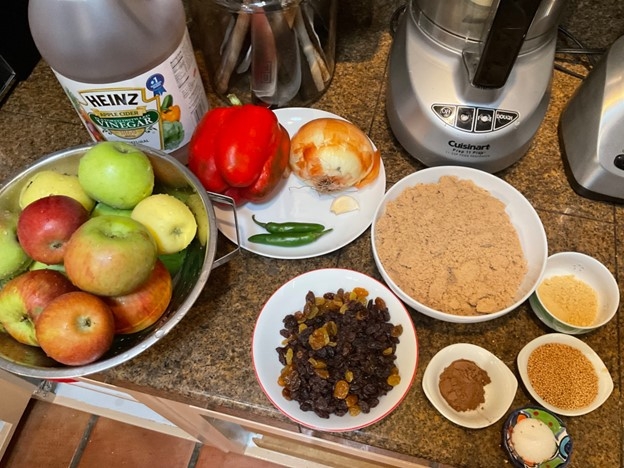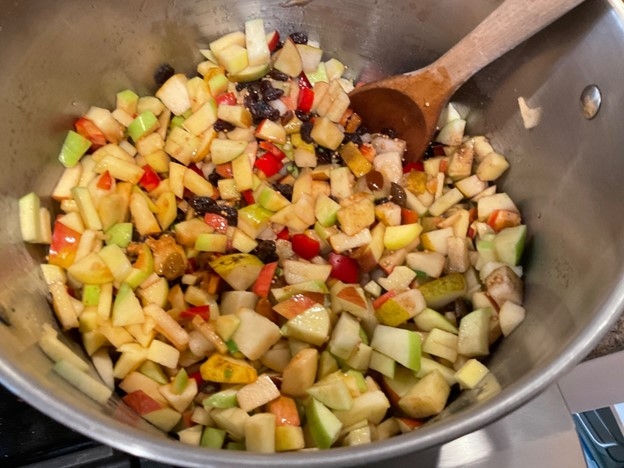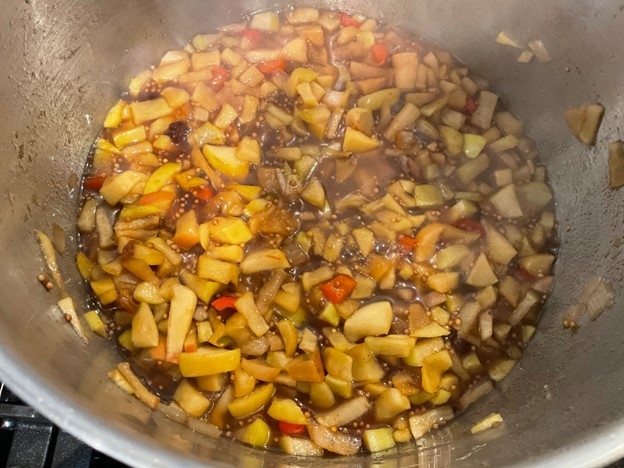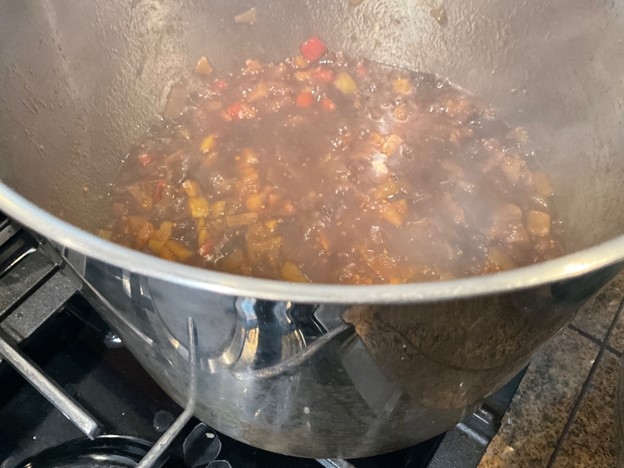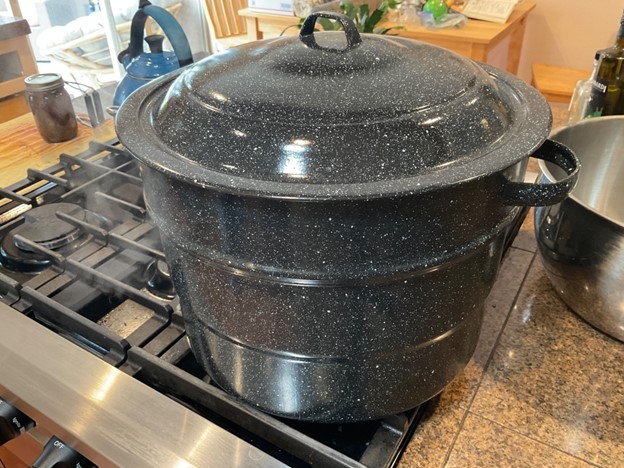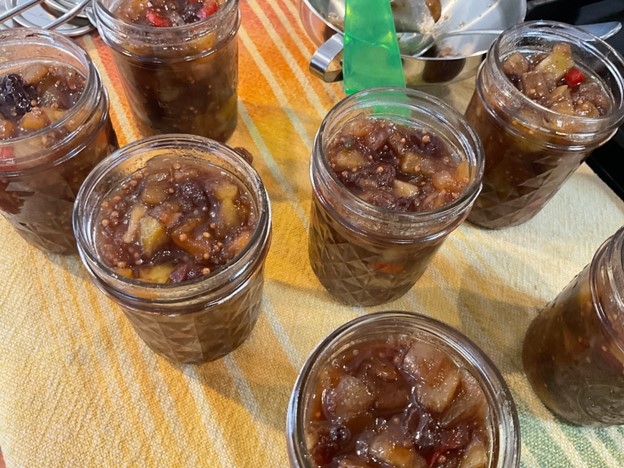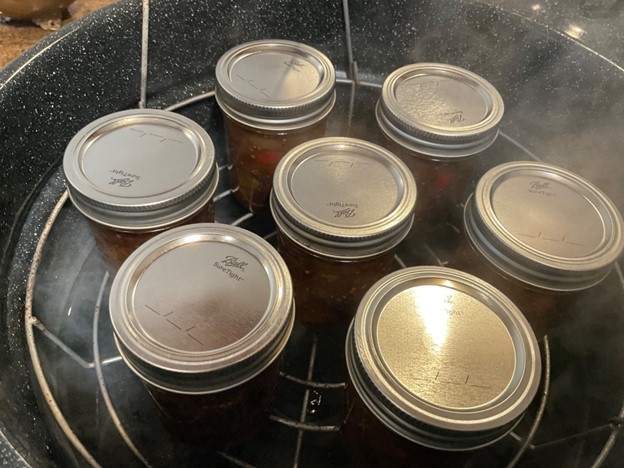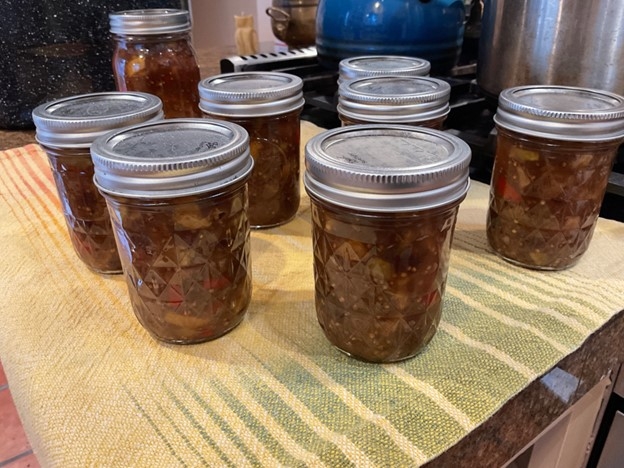Curious about Chutney
Author: Jennifer Codron, UC Master Food Preserver Program Volunteer
Fall is here and so are the many delicious varieties of apples on the Central Coast! Apples are versatile and can be used in a variety of ways, like chutney. Chutneys are a delicious spread packed full of fruit pieces, added spices, vinegar, and sugar that can zest up sandwiches, eggs, charcuterie boards and can even be used as a topping for meats such as pork and chicken.
Some people, including myself, have never eaten Chutneys outside of Indian cuisine, but these condiments are also popular in Middle Eastern cuisine and have also been adapted by the British. I was curious to see what ingredients go into a chutney as well as the process of making one.
Once you have decided to try your hand at preserving chutney, begin by selecting a research-based, approved recipe for canning. I used this revised recipe from the National Center for Home Food Preservation Publication, So Easy to Preserve. This revision is intended to increase the apple flavor. I used a mixture of both tart and sweet apples to increase the depth of flavor. You could also substitute some pears for the apples as long as you maintain the total amount of fruit needed in the recipe.
When you are ready to begin, start by washing your hands and thoroughly cleaning and sanitizing your workspace. Next, gather the ingredients you will need for the recipe.
Then, place all ingredients in a large pot on the stove and bring to a boil. Simmer this mixture until it begins to thicken. The recipe states about 45 minutes but this took me closer to an hour and 15 minutes. Be sure to stir often near the end of cooking time when the mixture starts to thicken. To test for doneness, dip a wooden spoon into the top layer of chutney. If liquid runs onto the spoon, you know that you'll need to cook it a bit longer. The color will darken into a beautiful caramel color.
The apples and peppers and onions begin to break down and release their juices.
The mixture darkens and turns into a rich caramel color.
While you are cooking the sauce, make sure your washed jars are heated before filling. Cover them with water in a boiling water canner and simmer them at 180 degrees F until they are ready to be filled. Carefully remove them to a clean towel on a tray right before you are ready to fill the jars.
Once the mixture is thick, turn off the heat. Ladle out the mixture into the jars. This is a chunky mixture so it is easy to over fill the jars. If you do, just use a clean spoon to scoop some out and distribute to another jar. Use your debubbler to scrape down the sides of the jars to remove any air bubbles. Next check to make sure you have a ½ in. headspace before wiping the rims with a damp paper towel. Next place lids on jars and screw on bands until fingertip tight.
Place the jars spaced evenly on the rack in the canner, drop the basket down to the bottom and make sure there is an inch or two of water covering the tops of the jars.
Next,place the lid on and bring the water to a rolling boil. Once it has started boiling, start your timer for 10 minutes and make sure the pot continues to boil the entire time. Steam will be coming out the sides. If it drops below the rolling boil, turn up heat and bring to a boil and restart processing time.
After 10 minutes, turn off the heat,and leave the jars to settle for another 5 minutes before removing to the tray with a clean towel. The puddle of water on the lid is ok and should not be wiped away. Leave your jars for 24 hours.
After twenty-four hours, check to make sure the lids have sealed. They will not press in if sealed correctly. Take a little vinegar on a paper towel and wipe any hard water deposits that have formed. Remove the rings and write the type of food and date on the jar lid before storing.
For the best flavor, wait a couple of weeks before eating. Enjoy this apple condiment year-round and it also makes a nice gift. Enjoy!
Have home preservation questions?
Visit our website for more food preservation tips and safety resources or email our help line at slomfp@ucanr.edu !
